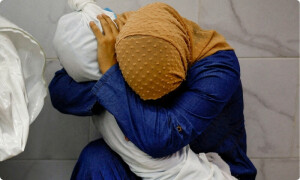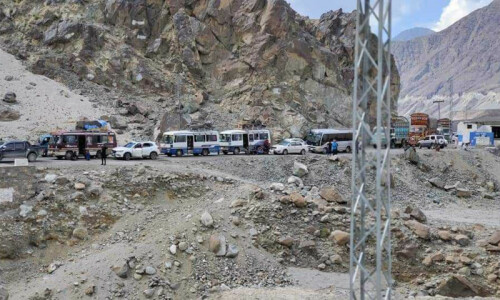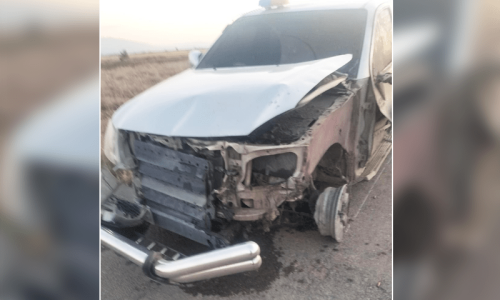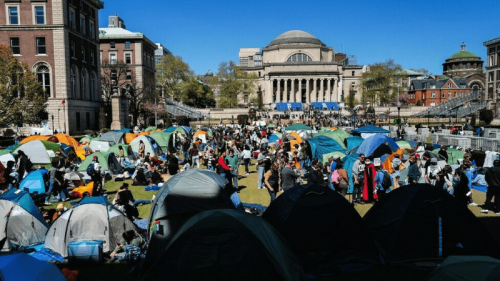
IT is well established that Pakistan is urbanising quickly and that the urban population will be 50 per cent by 2030. It is therefore necessary for stakeholders to be informed of its various challenges.
Prepared by a group of national and international professionals, specialists and sector experts (including the writer), and managed by UN Habitat and the Ministry of Climate Change, the State of Pakistani Cities (SPC) report launched last month covers urbanisation, urban economy, governance and transport, basic services, housing, environment and safety, and heritage and tourism. By analysing Karachi, Lahore, Islamabad, Rawalpindi, Multan, Faisalabad, Peshawar, Quetta, Hyderabad and Gujranwala, where about half the urban population lives, it provides a snapshot of current urbanisation trends.
Let us start with urban economy. Ninety-five per cent of federal tax revenue is collected from these 10 cities, with Karachi contributing 55pc, from key sectors like telecommunications, finance and insurance, transport and manufacturing. Average per capita income in urban areas is Rs46,000; Rawalpindi has the highest at Rs82,000 while Quetta has the lowest at Rs37,000. The poverty rate in Quetta is 46pc, Multan 35pc, while Karachi (4.5pc) and Lahore (4.3pc) have the lowest poverty rates, apparently due to a high scale of populist philanthropy.
Pakistan’s rapid urbanisation presents many issues.
Urban infrastructure is in dismal condition. While Lahore, Rawalpindi, Islamabad and Multan have a bus rapid transit system, with Karachi and Peshawar to follow, overall, public transport is in disarray. The rising number of private vehicles, limited public transport options, almost nonexistent options for non-motorised transport and pedestrians, poor traffic management and a weak regulatory environment are key detriments to proper urban mobility.
About a third of households lack access to piped water, and supplied water is almost always not fit for drinking. Sewerage and solid waste management systems are grossly inadequate in most cities, affecting the water quality in rivers, canals and waterways, lakes and sea into which untreated waste water is dumped. Municipal waste in large part is partially disposed at certain sites without a scientific landfill system. Power supply is also in acute disorder. Whereas the government contends that connections are available to over 85pc of households in these cities, the transmission and distribution network is in shambles. More than 18pc of electricity is lost before reaching consumers.
Then there is the dilemma of the housing situation. For real estate and upper-income groups, housing developments are lavish and wasteful, while schemes for lower-income groups have not been prepared in a long time.
Traditionally, the existing pattern of land ownership has a direct bearing on its transition in the urban scenario. Clan influences, appropriation and possession of land are important factors that govern the direction of development. When land is in private ownership under traditional landlords, they lobby with the public-sector officials to devise the policies/priorities to maximise their own benefits — often at the fringes of large cities. Karachi’s north-western outskirt is one of the main locations where local landlords have benefited from the city’s growth.
Urban lower-income groups have constrained access to housing credit, a key prerequisite to home ownership. As commercial financial institutions do not have credit lines for these groups, public credit agencies become the sole point of hope. A revamped House Building Finance Company can deliver this much-needed service desired by our urban poor communities.
Heritage and cultural tourism is also important for cities to focus on, since the survival of heritage is directly proportional to its commercial potential, rather than its cultural significance. Many of our cities evolved from a historic, old city fortress. The modern city later emerged during colonial times. There is enormous potential to turn historic monuments and old city walls into hubs of planned cultural activities. Some work has been done in Lahore, Multan and Peshawar, but more effort is needed to build upon our immense cultural capital.
The report suggests many policy and plan responses to the identified problems. Connecting national and local policies and plans with the Sustainable Development Goals is one way to reconcile international efforts to improve cities. Capacity building, including that of local bodies, is another important step. To achieve this aim, there is a need to revisit existing laws and statutes that make administrative and financial powers converge in the provincial government. Creating participatory and evidence-based territorial and urban planning is also needed to help improve our cities in their functioning and sustainability status.
The writer is a professor and dean, Faculty of Architecture and Management Sciences, NED University, Karachi.
Published in Dawn, August 12th, 2018











































